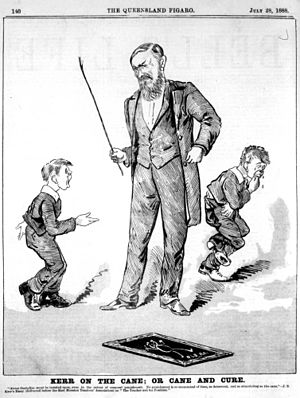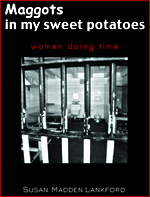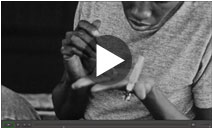See on Scoop.it – Homeless Issues: Humane Exposures
Tiny Houses for the Homeless: An Affordable Solution Catches On Truth-Out For many years, it has been tough to find a way to house the homeless.
See on truth-out.org
Archive for Humane Exposures
Tiny Houses for the Homeless: An Affordable Solution Catches On – Truth-Out
Convict Moms May Benefit From Pending Congressional Sentencing Reform and Declining Female Prison Populations
 Today Congress is moving on sentencing reform, which could further ease the pressure on female prisoners with children. In addition, they may benefit from less emphasis on harsh sentences for nonviolent offenses.
Today Congress is moving on sentencing reform, which could further ease the pressure on female prisoners with children. In addition, they may benefit from less emphasis on harsh sentences for nonviolent offenses.
Marc Mauer, executive director of the Sentencing Project, says:
The decline in women’s incarceration appears to be related to fewer drug offenders in prison. As harsh sentencing policies have begun to be scaled back, and diversion programs expanded, fewer women are now being sentenced to lengthy prison terms for lower-level drug offenses.
Since the early 1970s, the “war on drugs” led to a surge in the US prison population of both men and women. But percentagewise, women saw a greater increase. According to the Sentencing Project, between 1980 and 2010, the number of women in federal and state prison rose by 646 percent; from 15,118 to 112,797. If you count women in local jails, that brings the US total of female prisoners in 2010 to more than 205,000.
Now the trends are reversing. After peaking in 2009, the US prison population has declined annually–something that has been attributed to factors including the recession, and changes in public attitudes and in the courts. In 2011, the US Supreme Court upheld a ruling that ordered California to ease overcrowding in its state prisons.
Congress is now getting into the act. On January 30, 2014, the Senate Judiciary Committee voted for legislation aimed at reducing prison overcrowding further. In a bipartisan 13-to-5 vote, the panel approved the Smarter Sentencing Act,
which would substantially reduce mandatory minimums for some drug offenses and allow federal judges more discretion in determining sentences for nonviolent drug offenses?
The Act amends the federal criminal code to direct criminal courts to impose a sentence for specified controlled substance offenses without regard to any statutory minimum sentence if the court finds that the defendant does not have more than one criminal conviction. It also authorizes a court that imposed a sentence for a crack cocaine possession or trafficking offense committed before August 3, 2010, on motion of the defendant, the Director of the Bureau of Prisons, the attorney for the government or the court, to impose a reduced sentence as if provisions of the Fair Sentencing Act of 2010 were in effect at the time such offense was committed.
Courts must also reduce mandatory minimum sentences for manufacturing, distributing, dispensing, possessing, importing or exporting specified controlled substances. And it orders courts to formulate guidelines to minimize the likelihood that the federal prison population will exceed federal prison capacity, while it emphasizes the need to reduce and prevent racial disparities in sentencing.
Since women are more likely to be incarcerated for a nonviolent offense than men, they may benefit from the law disproportionately. Already, between 2009 and 2012, the female prison population dropped by 4.1 percent.
This trend has particular meaning for prisoners with children. In 2008, 52 percent of women in state prison and 63 percent in federal prison had at least one child under the age of 18, according to the Bureau of Justice Statistics. Six out of 10 women prisoners with children lived with their kids before incarceration.
Most kids don’t have physical contact with their mother while she is incarcerated, because women are often placed in facilities more than 100 miles from home, where visiting is both expensive and difficult. Collect phone calls from prison are expensive, and some mothers do not want to expose children to the prison environment and security procedures, which can be intimidating.
Bahiyyah Muhammad, a sociology professor at Howard University in Washington, D.C., who studied the children of incarcerated parents, suggests:
One solution would be to have offenders serve shorter sentences that are focused on drug treatment and education and that take place closer to their families. That way you keep the family together and allow them to have a role in this rehabilitation process.
A parental classification be implemented for convicted mothers) who have custody of their children, so they can serve their time at an institution designed for parents–that is, “friendlier” for kids.
I think we could save a lot of money if we used alternatives to punish nonviolent drug offenders, especially if they are parents. Parental incarceration has long-lasting effects on children.
Since the 1970s, the dramatic rise in the US prison population has put significant strain on the limited resources available to treat prisoners and to help ex-convicts reintegrate into the outside world.
Talking Justice: Igor Koutsenok and Susan Madden Lankford
Michigan Judge, Following 2012 U.S. Supreme Court Decision, Urges State Consider Parole for Prisoners Given Life Sentences for Crimes Committed as Juveniles
Under an order federal Judge John Corbett O’Meara issued in late November 2013, Michigan must consider paroling 350 prisoners serving life sentences for crimes they committed as juveniles. This complies with a June 2012 U.S. Supreme Court decision that sentencing schemes that fail to account for a young person’s potential for character and cognitive development are a form of cruel and unusual punishment. The justices declared that juveniles handed life sentences are entitled to the possibility of parole.
Judge O’Meara said that by Jan. 31, 2014, the state must 1) create an administrative structure to determine which “juvenile lifers” deserve parole, 2) inform juvenile lifers who’ve been behind bars for at least 10 years that their eligibility for parole will be considered in a meaningful and realistic manner, 3) schedule proceedings, including public hearings, for eligible prisoners applying for parole, 4) ensure the Parole Board explains its decision in each case and that there will be no vetoes (of parole) by the sentencing judge or anyone else.
Judge O’Meara also ruled:
As of the date this process begins, no prisoner sentenced to life imprisonment without parole for a crime committed as a juvenile will be deprived of any educational or training program which is otherwise available to the general prison population.
Lansing lawmakers are considering legislation to change state sentencing guidelines for juvenile lifers. A bill approved unanimously by the Senate in October would allow some minors convicted of murder to avoid life sentences, but it wouldn’t apply to those currently behind bars. A House bill would permit parole consideration retroactively for juvenile lifers.
The Sentencing Project
recently released a report and national survey results on Juvenile Life Without Parole (JLWOP). It noted that United States stands alone worldwide in imposing life sentences without parole on juveniles, and that today a record number of people are serving such sentences.
Many of us erroneously believe that sentences of life without parole translate to a handful of years in prison followed by inevitable release. In reality, such a sentence usually means that the individual will die in prison.
The majority of JLWOP sentences are imposed in states in which judges are obligated to sentence individuals without consideration of any factors relating to a juvenile’s age or life circumstances. Pennsylvania, which has the most juvenile lifers, requires that youth of any age charged with homicide be tried in adult court and, upon conviction, be sentenced to life without the possibility of parole.
This first-ever national survey of juvenile lifers deals with their life experiences prior to their conviction, as well as descriptions of their lives while incarcerated. The findings are sobering, and should motivate policy discussion about this extreme punishment.
Most people sent to prison for life as youth were failed by systems that are intended to protect children. Survey findings from 1,579 individuals around the country serving these sentences demonstrate high rates of socioeconomic disadvantage. There are also extreme racial disparities. Sentences are frequently imposed without judicial discretion and utilize counterproductive corrections policies that thwart efforts at rehabilitation.
Seventy-nine percent of juvenile lifers reported witnessing violence in their homes; 54.1 percent witnessed weekly violence in their neighborhoods; 46.9 percent experienced physical abuse, including 79.5 percent of girls; 31.5 percent of juvenile lifers were raised in public housing; 17.9 percent were not living with a close adult relative just before their incarceration and some reported being homeless, living with friends or being housed in a detention facility, treatment center or group home.
Juvenile lifers faced significant educational challenges: two in five had been enrolled in special education classes, only 46.6 percent had been attending school at the time of their offense and 84.4 percent had been suspended or expelled from school at some point.
The survey found that often corrections policies curtail efforts at rehabilitation. Most (61.9 percent) juvenile lifers are not engaged in programming in prison, but this is usually not due to lack of interest, but because of state or prison policies. Many juvenile lifers are engaged in constructive change during their imprisonment when they are permitted the opportunity to do so. Two-thirds have attained a high school diploma or GED.
Despite long distances from home and family, many juvenile lifers attempt to maintain close ties with loved ones through phone calls, letters and visits. As years in prison pass, lifers are charged with significantly fewer disciplinary actions.
Today, most states have enacted provisions for transferring some youth out of juvenile courts and trying them in adult courts. These situations expanded greatly in the past 20 years. Part of the reason for the rise in sentencing youth to life in prison was the upswing in crime in the late 1980s and early 1990s, fueled in large part by crack cocaine and easy access to illegal guns. By 1993, the rate of juvenile homicides had tripled from 1983.
However, homicide rates among juveniles dropped 74 percent from 1993 to 2008. But fueled by media reports of celebrated cases and resulting public fears, catch phrases such as “adult crime, adult time” were popularized. Policymakers responded with a frenzy of tough laws that disregarded developmental differences between youth and adults, and instead focused exclusively on the crime. State legislatures passed laws that eased the way for young people to be transferred to and tried in adult courts. By the mid-1990s, every state had passed laws that either allowed or mandated that teenagers be tried as adults under certain circumstances. So there was a steep rise in the number of teens who were sentenced to life without parole during the mid-1990s.
Based on survey results from 49 states (not Louisiana), respondents have been in prison an average of 15 years; 359 of them for least 21 years and one juvenile offender has already served 49 years in prison. Sixty percent are black and 14.3 percent are Latino.
Survey respondents reported childhoods that were marked by frequent exposure to domestic and community-level violence, problems in school, engagement with delinquent peers and familial incarceration. While an estimated one in 16 young people in the general public experiences sexual abuse, it’s one in five among the JLWOP respondents.
Survey respondents were over six times more likely to report having witnessed family violence than other youths did. Sixty-two percent perceived their neighborhood to be unsafe and more than two-thirds saw drugs sold openly where they lived. More than 54 percent of juvenile lifers witnessed acts of violence on at least a weekly basis. More than a quarter of them have had a parent in prison and 59.1 percent had a close relative in prison.
Teenagers housed with adult prisoners face a heightened risk of suicide, sexual assault and physical assault. The Sentencing Project Report suggests these solutions: Eliminate JLWOP sentences, allow and encourage these Inmates to engage in rehabilitation programming, address racial disparities and house youth in age-appropriate settings, pre-trial and post-conviction.
RELATED ARTICLES
Related articles
In Canada, the Government’s Highly Successful Five-year Housing-first Strategy for the Homeless Has Just Been Extended Until 2019

Homeless person in a bus shelter at York and Wellington Streets, downtown Toronto, Ontario, Canada. (Photo credit: Wikipedia)
Experts on homelessness are giving the Canadian federal government credit for utilizing the right approach to helping some of the most vulnerable people in Canada. Ottawa just extended its Homelessness Partnering Strategy (HPS) until 2019 with $119 million per year in new funding.
Dr. Stephen Hwang, a scientist and homelessness researcher at Toronto’s St. Michael’s Hospital, said:
They are to be applauded for moving to a housing-first approach, which is evidence-based. It’s wonderful that the federal government decided to renew the federal homelessness initiative for another five years.
For the next half-decade, Employment and Social Development Canada will concentrate funding on programs that take the housing-first approach to mentally ill and addicted people living on the street. A $110 million, 2008 to 2013 research project led by the Mental Health Commission of Canada showed how getting the most visible and notorious homeless people into permanent housing first leads to greater success down the road treating addictions and mental illness and keeping people off the streets.
Toronto’s Streets to Homes program has moved about 4,000 people into their own apartments since 2005 using a housing-first model. Eighty% of Streets to Homes’ clients remained in their new homes at least 12 months. Edmonton’s housing-first initiatives cut that city’s street population by 20% between 2008 and 2010.
The government expects that 65% of funding to Canada’s 10 largest cities will be spent on housing-first projects. Smaller cities will have to come up with housing-first initiatives for about 40% of their funding and tural communities will have no housing-first requirement.
Since the launch of the HPS in 2007, the government has approved more than $745 million for projects to prevent and reduce homelessness across Canada.
A 2009 poll found that approximately one in nine Canadian adults, or close to three million people, reported that they have either experienced or come close to experiencing homelessness Rates were highest among respondents with income levels less than $40,000 a year (20%) and those 45 to 55 years of age (16%).
In 2010, the number of households on affordable-housing waiting lists was at an all-time high of 141,635 across Ontario, up almost 10% in a year.
Between 2007 and 2011, almost $55 million in federal homelessness funding was invested in 317 projects which directly focused on youth and young adults between 15 and 30 years of age.
Saskatoon Housing Initiatives Partnership is helping reduce, prevent and end youth homelessness in Saskatoon by administering HPS and investing more than $1 million per year into projects targeting street youngsters.
Covenant House Vancouver’s Crisis Shelter program provides street youth a safe place to stay, food, medical attention and the opportunity to develop a plan to move away from the streets and into a better life. In January 2010, 32 new beds opened, bringing shelter capacity to 54 beds. The expansion was funded in part by an $800,000 contribution from the Canadian government through HPS.
However, Catholic agencies that deal directly with mentally ill and addicted street people warn that HPS is no silver bullet, and that federal focus on it may neglect other useful tools in fighting homelessness.
At Good Shepherd Ministries in downtown Toronto, assistant executive director Aklilu Wendaferew looks forward to applying for HPS funding and believes that approach can work, but he warns against thinking we now have a cure for homelessness.
Wendaferew said:
Just relying on one single approach to the problem wouldn’t be wise. Depending on the circumstances, you may have to adopt a number of approaches. Mental health is an issue. Addiction is an issue. And poverty in general is a serious problem.
When the huge North American recession hit at the end of 2008, the numbers of people sleeping in Canadian shelters and dropping in for meals both spiked. This was not a mental health problem but was due mainly to loss of income and poverty.
Related articles
Broward County Agencies Agree to Reform School Punishments
A groundbreaking agreement was reached this week in South Florida to end the so-called school-to-prison pipeline. In a remarkable show of cooperation involving 10 county agencies and community organizations, the Broward County Collaborative Agreement of School Discipline was signed on Tuesday.
The new policy at the heart of the agreement creates a procedure for district officials and school resource officers to follow when a student misbehaves. For non-violent misdemeanors such as harassment, trespassing, incidents related to alcohol, possession of a misdemeanor amount of marijuana or drug paraphernalia, administrators will now try to resolve the situation without an arrest. Several alternatives such as participation in a week-long counseling program will be used to deal with such behavior.
The agreement places the responsibility on principals to determine the appropriate disciplinary action for student misbehavior, rather than delegating it to school resource officers. The procedure makes police involvement a last resort.
Marsha Ellison, chairwoman, Fort Lauderdale/Broward Branch of the NAACP and chairwoman of the Juvenile Justice Advisory Board said:
Silly behavior is not criminal behavior, and we have led an effort to make sure the administrators take control of the schools, rather than law enforcement.
Ellison forged a coalition among several agencies to work towards a change in the “zero-tolerance” policy. They include the School Board of Broward County, the Seventeenth Judicial Circuit, the State Attorney’s Office, the Public Defender, the Broward Sheriff’s Office, the Fort Lauderdale Police Department, the Florida Department of Juvenile Justice, the NAACP and the Juvenile Justice Advisory Board.
In the late 1990s, school districts across the country began to bypass other forms of discipline, such as counseling and detention, and opted for more extreme punishment alternatives, such as suspension, expulsion and law enforcement involvement. As a result, hundreds of thousands of students were removed from schools or arrested for minor infractions such as tardiness or throwing candy in class.
Broward County sheriff Scott Israel, who earlier this year unilaterally directed his deputies to invoke a little used state law allowing for “Civil Citation” as a means of reducing the number of juvenile arrests, said: “We’ve done away with the phrase ‘zero-tolerance.’ Kids will now get second, third and fourth chances. Students will not become collateral damage of the way things used to be.”
The agreement signed Tuesday will have a significant impact on black and other minority students, who have been disproportionately affected by the “zero-tolerance” policy, resulting in mass incarceration and creating a vicious cycle for students and their families. This has come to be known as the school-to-prison pipeline.
Broward County Schools, which is the nation’s sixth largest school district, is now a leader in the discipline reform movement. About 100,000 of Broward’s 260,000 students are black, but they have been suspended at more than twice the rate of white students. According to the U.S. Department of Education, Broward Schools imposed in-school suspensions on 11,810 black students in 2009, or about 12% of the black student population. Black students were given 5,135 out-of-school suspensions. In 2010 and 2011, there were more than 1,000 school-related arrests—and nearly three-quarters of them were for non-violent misdemeanors.
Kim Keenan, NAACP general counsel, said:
Broward County has set an example we can use as a template that we can take across the country. Without an agreement like this today, what we have is a world that, instead of focusing on educating our students, we are focused on shipping them off to juvenile detention centers. That’s not what we send kids to school for. We are not training them to be criminals; we are training them to be productive citizens in Florida.
As part of the agreement, Broward schools will continue to establish and implement guidelines for the handling of school-based student misbehavior. The district reported that it has already seen positive results, including a decrease in suspensions by 66.2%, compared to the same time period in 2012. Expulsion is down by 51.4% and school-related arrests have fallen by 40.7%.
“We are going to take this model and run with it,” said Adora Obi Nweze, president of the NAACP Florida State Conference and also the Miami-Dade branch. “The NAACP can take this model in all of our branches and make it their own. We now have the foundation to save a generation of youth of color from the criminal justice system. This would not be possible without the leadership of our Fort Lauderdale/ Broward Branch.”
RELATED ARTICLES
Related articles
Montana ACLU and Department of Corrections Settle Women’s Prison Lawsuit
Under a settlement announced recently in a discrimination lawsuit Montana’s Department of Corrections will offer boot camp for female prisoners and cancel a mandatory treatment program that was criticized as being degrading. The state also agreed to pay $50,000 in legal costs and a combined $12,000 to the seven current and former prisoners named in the case.
Montana’s Department of Corrections will offer boot camp for female prisoners and cancel a mandatory treatment program that was criticized as being degrading. The state also agreed to pay $50,000 in legal costs and a combined $12,000 to the seven current and former prisoners named in the case.
The lawsuit began last year with a complaint filed in federal court by one of the plaintiffs, Susan Fish, who initially represented herself in the case. It targeted the prison’s six-year-old “Right Living Community” program and the lack of a boot camp for women as an alternative to prison.
Fish and the others alleged they received little training and were forced to sing and participate in children’s games such as “Duck Duck Goose.” The plaintiffs also said the program established a prison hierarchy in which high-ranking inmates could take away privileges of lower-ranked fellow inmates.
ACLU attorney Anna Conley said:
It ended up being degrading, non-rehabilitative and served no purpose at all but to create problems among prisoners They had to participate in this whether they wanted to or not. If you refused to participate in this model, you would go to solitary confinement.
Regarding Right Living, Corrections attorney Ira Eakin said a review of the program undertaken after a new warden was hired at the Women’s Prison in the spring determined it was not as effective as more “traditional” rehabilitation programs. Whereas the discontinued program awarded privileges to prisoners based on their participation, the traditional approach offers privileges based on prisoner behavior.
The settlement calls for the department to offer boot camp for women prisoners beginning Nov. 1 at Deer Lodge. Such a program is already available to male defendants and is based on a military-discipline format.
Completion of boot camp can mean a chance for a reduced sentence, an option that had been denied women prisoners since the cancellation of female boot camp last decade.
One of the plaintiffs, Tasha Rainey, remains incarcerated at a pre-release center in Billings two years after a male co-defendant convicted of similar crimes was released on probation after successfully completing boot camp.
“In order to give female offenders who wanted to participate in boot camp the same opportunity, we agreed to bring back the boot camp for females,” said Eakin, who helped negotiate the settlement. He said up to four slots for women were planned, with the possibility of expanding that number in the future if demand is sufficient and the Legislature is willing to pay for it.
The prior cancellation of boot camp for women followed low participation and logistical problems stemming from having both males and females at the same facility in Deer Lodge.
At one point, The Corrections department sought to have Fish’s case dismissed on the grounds that she had not followed proper legal procedures, but the move was denied by U.S. Magistrate Judge Carolyn Ostby.
The settlement releases the state from any future liability in the case.
RELATED ARTICLES
Related articles
The War Against the Homeless (Infographic)
South Dakota, Which Used to Lock up Youths at the Highest Rate, is Now Rolling Out Statewide a Successful Juvenile Detention Alternatives Program
A program in two South Dakota counties to help juvenile offenders stay out of detention is poised to expand statewide. South Dakota’s two-year-old Juvenile Detention Alternatives Initiative (JDAI) provides substitutes for detention. Rather than being locked up for offenders who qualify can opt for such measures as daily reporting or electronic monitoring.
Since JDAI was introduced in them, Pennington and Minehaha counties have enjoyed reductions in the average number of youngsters in their county detention centers by more than half.
Recently the state court system accepted a $100,000 grant from the Annie E. Casey Foundation to fund a statewide program coordinator, and the agency intends to ask legislators to make the position permanent. Gov. Dennis Daugaard’s administration and the state court system support the shift in thinking on juvenile justice, and expansion of JDAI statewide.
We support the concept of detention alternatives, and we’ve cooperated with the transition, knowing this would be going statewide.
Officials say the program’s goals of trimming the number of youths in lockup and reducing incidents of juvenile crime through the use of less-restrictive alternatives is a model that can be valuable throughout the state.
South Dakota state court administrator Greg Sattizahn said:
We’re going to use this grant to take it statewide, because the successes in Minnehaha and Pennington counties have been significant.
The shift toward alternatives to juvenile incarceration is particularly significant in light of the state’s history. South Dakota has been re-evaluating its juvenile programs for years, since the death of 14-year-old Gina Score at a Department of Corrections boot camp prompted the creation of a corrections monitor for the state.
Change has not come quickly, however. In 2006, the Casey foundation said that South Dakota locked up youth at a higher rate than any other US state.
The JDAI concept turns on the evidence-based theory that detention can be reduced without increasing juvenile crime. Now that Minnehaha and Pennington counties have seen that happen, prosecutors statewide are more likely to accept the program.
RELATED ARTICLES
Related articles
D.C. Meeting and NSC Juvenile Justice Report Focus on Cost-saving Alternatives to Youth Incarceration

English: Front of the Robert F. Kennedy Department of Justice Building in Washington DC (Photo credit: Wikipedia)
Three members of the National Research Council’s Committee on Assisting Juvenile Justice Reform presented the report’s findings on July 26, 2013. The report stressed that, “To effectively meet the challenges of juvenile offending and reduce recidivism, states and localities must move away from a justice model focused on punishment and instead adopt a model that acknowledges the changes that youthful offenders are undergoing and fosters positive development and accountability.
Dr. Robert L. Johnson, Committee Chair and Director of the Division of Adolescent and Young Adult Medicine at Rutgers University—New Jersey Medical School, said, based on his 40 years working with youth in trouble with the law, that the “juvenile justice system as it now exists does not respect human development and it often makes these kids worse.”
The frontal lobe, which is home to judgment, impulse control, emotions, reasoning and problem-solving is the last part of the brain to mature, usually at about 24 years old. As a result, Dr. Edward Mulvey, Director of the Law and Psychiatry Program at the Western Psychiatric Institute and Clinic of the University of Pittsburgh School of Medicine said:
Adolescents differ from adults in three important ways: they have trouble regulating their feelings in emotionally charged situations, they have a heightened sensitivity to contextual influences in their environment, such as peer pressure. and they are less able to understand the future implications and impact of their decisions and judgments.
“To support positive development, adolescents need a strong, caring parent or parent figure, positive peers and opportunities for positive decision-making and critical thinking. Interventions that hold offenders accountable for their actions will promote healthy moral development and legal socialization, if youth perceive them to be fair. Conversely, interventions that youthful offenders perceive to be unfair will foster further social disaffection and antisocial behavior.
Gladys Carrion, Commissioner of the New York State Office of Children and Family Services, believes that in many cases, juvenile justice does not have access to important supports found in the mental health, substance abuse treatment, education, developmental disabilities and housing systems—and this needs to change.
During her six years as head of New York State’s Office of Children and Family Services, her agency has closed 21 facilities. It costs her state $262,000 a year to house a child in the juvenile justice system, so the savings have been substantial. Now only the children who pose a risk enter the juvenile justice system. The state has used the savings to fund alternatives to detention, develop improved assessment tools, improve conditions of confinement for those youth in the system and streamline probation. New York has additionally shortened the length of stay in confinement for youth and has hired therapists, psychologists and psychiatrists to work with them..
In another meeting, on September 6, 2013 Senator Chris Murphy (D-CT) hosted “States’ Innovations in Juvenile Justice: Investing in Better Outcomes for Our Communities.” Leaders from Connecticut, Texas and Ohio, and federal juvenile justice leaders discussed recent bipartisan reforms that have improved outcomes for kids involved with the juvenile justice system and for youth who are removed from their schools for disciplinary reasons, and who are therefore at risk of becoming involved with the justice system.
Mike Lawlor, Under Secretary for Criminal Justice Policy and Planning in Connecticut, described legislation that greatly reduced the number of youth confined in juvenile justice facilities, developed new community-based supervision and treatment programs and raised the age of juvenile court jurisdiction from 16 to 18.
Texas State Senator John Whitmire detailed a new law prohibiting the use of confinement for youth adjudicated for misdemeanor offenses. He also explained a new incentive program for counties to place youth in local evidence-based programs, rather than in state-operated correctional facilities. Texas redirected $57.8 million that would have been used to house juveniles for misdemeanors in secure facilities into community-based programs.
Linda Teodosio, of the Summit County Juvenile Court in Ohio, explained how the RECLAIM Ohio (Reasoned and Equitable Community and Local Alternatives to the Incarceration of Minors) funding initiative has expanded dispositional options for youth and community-based alternatives while creating financial incentives for counties to keep youth out of confinement. In fiscal year 2012, these county subsidies for juvenile justice programs totaled approximately $47.3 million, serving 600 programs and 110,000 youngsters across Ohio. The funds received through RECLAIM can be used for a vast array of treatment, intervention, diversion and prevention programs, such as treatment, alternative schools, intensive probation, electronic monitoring and residential treatment.
Panelists also focused on significant reforms in their states and at the local level that reduce the impact of harmful school discipline policies which push youth into the juvenile justice system. These reforms include reducing the number of exclusionary policies and school-based referrals to law enforcement. The three featured states have saved millions of dollars from reduced incarceration and cut back on harmful, ineffective policies such as the over-confinement of youth for low-level offenses, while improving outcomes for youth and keeping communities safe.
Senator Murphy stated:
In Connecticut, it costs about $14,000 a year to educate a student, while it costs $270,000 a year to house a child in custody. In a time of tight budgets, it makes absolutely no sense to continue to house as many kids as we do in prisons when it costs about 10% of that amount to keep the kids in school and in communities.
“But we’re moving in the right direction. Over the last decade, 10-15 states have figured out that there are steps to divert kids out of incarceration. By reinvesting funds back into other juvenile justice prevention and intervention practices proven to work, states can realize additional cost savings, reduce recidivism and help youth become productive adults.
RELATED ARTICLES

























































